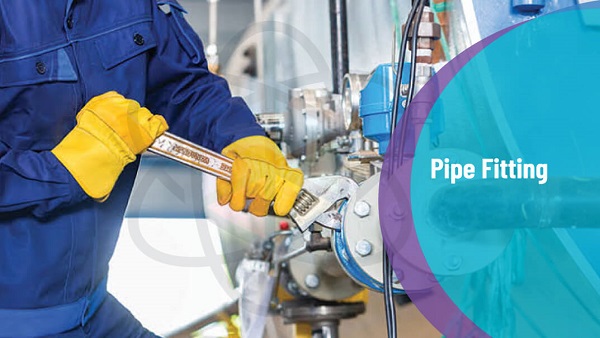The Importance of Pipe Fitter Certification For Pipefitters
Home » Informational » The Importance of Pipe Fitter Certification For Pipefitters
Installation, repair, and upkeep of piping systems are all part of the specialized craft of pipe fitting. Pipefitters are employed in various sectors, including manufacturing, construction, and energy generation. Workers must complete training and get certification to prove their abilities and skilled trades to work as pipefitters.
The Value of Certification For Workers In Pipefitting
Pipefitters are highly skilled specialists crucial to creating and maintaining industrial facilities, infrastructure, and structures. To succeed as a pipefitter, completing the required skilled trades training and certifications is critical as showing that you are an expert in your field. The following list of factors illustrates the significance of accreditation for pipefitter workers:
Quality Control
By pipe fitting training, pipefitter employees may demonstrate that they have received the training and abilities to carry out their duties safely and efficiently. Additionally, it gives companies a way to evaluate the competence and skills of potential hires, guaranteeing that they are selecting suitable applicants.
Observing Industry Standards
Compliance with industry standards and rules, such as those issued by the American Society of Mechanical Engineers (ASME) and the Occupational Safety and Health Administration (OSHA), frequently necessitates certification.
These requirements guarantee that piping systems are set up and maintained securely and that workers are shielded from dangers.
Career Development
A pipe fitting certification may present new chances for employment growth and higher-paying positions. Additional certificates can help individuals stand out from their colleagues and show employers they are committed to continuing their professional development. As a result, employers frequently give priority to hiring certified professionals.
Enhanced Safety
Certified workers have undergone training in safety procedures and are aware of any potential risks unique to their line of work. The safety of employees and the general public can be ensured by using this knowledge to prevent workplace accidents and injuries.
Credibility And Confidence
Credibility and trust in the knowledge and skills of pipefitter employees are provided by certification. It guarantees that a person can carry out job duties safely and successfully for employers, customers, and coworkers.
Industry Acceptance
The industry accepts pipe fitting certification as a mark of distinction. It elevates the reputation of pipefitter workers in the sector and sets them apart from those who need more certification.
Customer Assurance
Customer trust in the services offered by pipefitter personnel is increased through certification. In addition, it reassures them that the employee has the abilities and expertise required to carry out the task proficiently.
Compliance
Pipe fitting training guarantees that pipefitter employees adhere to the rules and regulations of the industry. skilled trades lessens the possibility of non-compliance and the ensuing danger of fines and other consequences.
Continuous Learning
To keep their certification, pipefitter workers must take continuing education courses. This guarantees that they remain knowledgeable about the sector’s most recent technology, methods, and safety regulations.
Individual Development
For pipefitter workers, a pipe fitter certificate fosters personal and professional growth. It gives them a sense of accomplishment and pride in their work and motivates them to keep growing and honing their abilities.
Certification Available To Pipefitter Workers
There are various certification options for pipefitter workers, each with its qualifications and advantages. This article will discuss the skilled trades and different certification options accessible to pipefitters and what each entails.
Apprenticeship Training
A pipefitter training center called an apprenticeship combines in-class instruction with on-the-job training. Given that it offers practical experience and the possibility to study under seasoned professionals, it is a well-liked choice for students who want to become pipefitters.
Candidates must have a high school diploma or equivalent and be at least 18 years old to be an apprentice. Although the duration of the apprenticeship program might differ, most of them endure four to five years. Apprentices receive benefits and a wage while in the program.
National Center For Construction Education And Research (NCCER) Certification
A nonprofit organization called the National Center for Construction Education and Research (NCCER). It offers training and certification programs for the construction sector, which includes pipe fitting. The NCCER certification is widely regarded as proof that a person has achieved a specific level of expertise.
Candidates must complete a pipe fitter certificate program and pass a test to become NCCER certified. You may finish the training program through a vocational school, an apprenticeship program, or another recognized training provider.
United Association (UA) Certification
Pipefitters and other professionals in specialized professions are represented by the United Association (UA), a union. Employers value UA certification since it shows high competence and expertise.
Candidates must finish a five-year apprenticeship program and a series of exams to become UA-certified. Several specialties, including pipefitting, welding, and HVAC, are covered by UA certification.
American Welding Society (AWS) Certification
The American Welding Society (AWS) offers various certification programs for welders, including those who work in pipefitting. Employers in the sector value AWS certification because it shows a high degree of welding proficiency and expertise.
Candidates must finish a training program and pass an exam to become certified in AWS. A vocational school or other recognized training provider may be used to complete the training program.
Occupational Safety And Health Administration (OSHA) Certification
Workers in various industries, including manufacturing and construction, can enroll in several certification programs the Occupational Safety and Health Administration (OSHA) offers. OSHA certification shows a high level of expertise and knowledge in workplace security.
Candidates must finish skilled trades training and pass an exam to become OSHA certified. You may complete the training program through a vocational school, an apprenticeship program, or another recognized training provider.
Conclusion
In conclusion, pipefitter personnel can obtain various certifications, each with its criteria and advantages. Getting certified can enable you to demonstrate your expertise and understanding in the area and open up prospects for job growth, regardless of whether you decide to pursue a vocational program, NCCER certification, UA certification, AWS certification, or OSHA certification.


